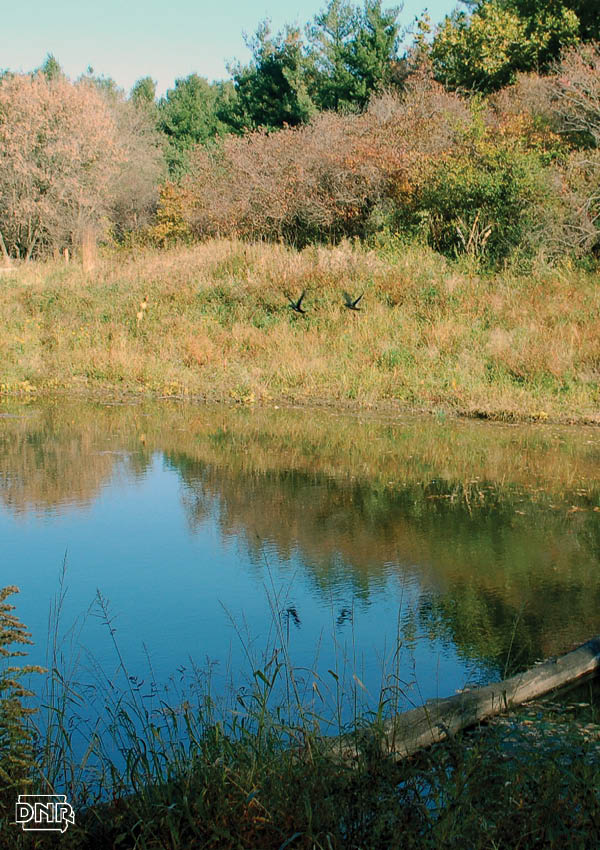 Read more about Central Park Lake and other water quality successes in Working For Clean Water, the DNR's annual watershed success story publication.
Read more about Central Park Lake and other water quality successes in Working For Clean Water, the DNR's annual watershed success story publication.
Central Park Lake encompasses only 25 acres, but the 297-acre park is a popular recreation destination in Jones County, despite the lake’s listing as “impaired” due to excess algae, bacteria and pH.
Disturbed by the lake’s inclusion on the Iowa list of impaired waters, local and state groups cooperated to create a comprehensive watershed assessment and management plan for the Central Park Lake Watershed. The plan focuses on five restoration categories. First, control runoff from the road system, parking and turf. Next, update wastewater systems to reduce nutrients and bacteria. Third, construct two ponds and two wetlands upstream from the lake to reduce runoff from adjacent lands. Plus, dredge 150,000 cubic yards of silt from the lake, and finally, restore fish habitat with fish reefs, spawning beds, fishing jetties and shoreline improvements.
Finding funds to carry out Central Park Lake’s watershed projects has been a major hurdle, but the first project —the second restoration category — started with a Water Improvement Review Board (WIRB) grant and funding from the Jones County Supervisors and Jones County Conservation Board. The park’s outdated wastewater system, which served the camping area, dump station and park residence, was restructured with three new septic lines. The old wastewater lagoon was reconstructed into a wetland and a new one-third acre wetland was created to catch sediment and recycle nutrients. So far, these wetlands have stopped 10 tons of sediment from entering the lake. Water monitoring for two years will gauge water quality improvement.
The lake’s watershed management plan received a boost when George and Rose Pearson of rural Center Junction sold 80 acres of land adjacent to the northwest boundary of Central Park to help protect the lake. Funds to acquire this land came from many contributing organizations, including several chapters of Pheasants Forever, Cargill Inc. and its Cedar Rapids employees, and the DNR Lake Restoration Program. Two large ponds and a wetland will be under construction on the former Pearson property in summer 2015. These will protect the lake from sediment and nutrient-rich runoff. Funding will come from the Fish Habitat Program that anglers support through purchase of fishing licenses, as well as funds from Twin Rivers Pheasants Forever and REAP funds acquired by Jones County Conservation.
The 80-acre property will also provide storage for dredged silt from the lake, a project that will begin this winter with sediment coring throughout the lake to determine where and how much sediment should be removed. “Many plans are still on the drawing board as funding opportunities are sought,” says Conservation Center Director Brad Mormann. “Some projects, such as rain gardens and grass buffers, are more labor intensive than costly. When these are completed, more runoff will be contained from reaching the lake.”
Meanwhile, the Jones County Nature Center in Central Park has added an interactive classroom and lab area, technological updates and more. Out in Central Park, new walkways and sidewalks were installed, and the Bowstring Arch Bridge was repaired. With this good start, Central Park and its star attractions are poised to provide visitors even better experiences in the coming years.
Learn more about fishing Central Park Lake and for more on helping water quality, check out our Earth Day Every Day board on Pinterest.